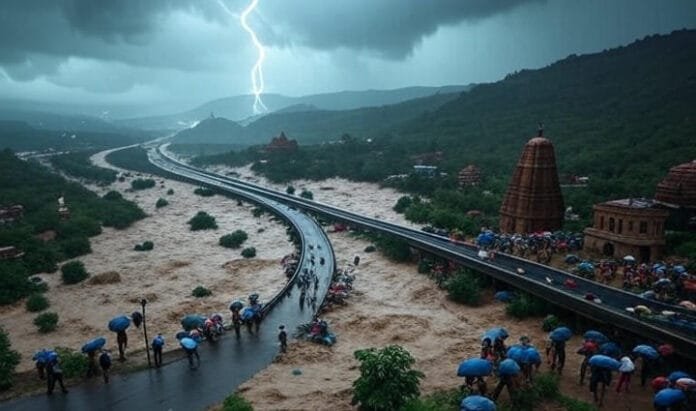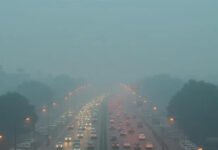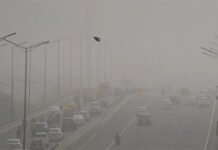The India Meteorological Department (IMD) has issued an orange alert for widespread heavy rainfall and extreme weather events affecting large swathes of northern, central, and northeastern India. The states of Uttar Pradesh, Madhya Pradesh, Rajasthan, Jharkhand, Chhattisgarh, Jammu and Kashmir, Himachal Pradesh, Uttarakhand, and parts of the northeast are bracing for intense monsoon activity for the next five days. Citizens, tourists, and pilgrims are urged to take extreme precautions.
Western Disturbance Triggers Havoc in Western Himalayas
Starting Monday, a fresh western disturbance is set to alter the weather landscape of the Western Himalayan region, including Jammu and Kashmir, Himachal Pradesh, and Uttarakhand. The Meteorological Center in Jammu has flagged high-risk warnings for cloudbursts, landslides, and flash floods in Samba, Kathua, Jammu, Udhampur, and Reasi districts. These regions are on high alert for 72 hours, with special advisories issued to those residing near rivers and seasonal streams.
In Kashmir division, the effect is expected to be less severe, although a yellow alert has been announced. Wind speeds reaching 30 km/h and light rainfall have already been observed around the Amarnath cave, where 7.5 mm of rainfall dropped the night temperature to a chilling 4.9°C — the lowest recorded across Jammu and Kashmir.
Himachal Pradesh: Flooded Roads, Collapsed Infrastructure, Lives Lost
Himachal Pradesh continues to reel under the fury of the monsoon. As of now, 252 roads, including two national highways, remain blocked due to landslides and flooding. The death toll since June 20 has reached 95, with 33 persons missing and 175 injured in various rain-related incidents.
327 power transformers are non-operational, and 787 drinking water schemes have been disrupted. The state’s fragile infrastructure has suffered immensely, prompting the state government to release ₹2 crore per district for immediate restoration.
Snowfall has returned to the high peaks of Lahaul, Kunzum Pass, Baralacha La, and Rohtang, turning them pristine white after nearly six weeks. Tragically, in Hamirpur district, a woman was crushed under a falling peepal tree in Dasmal village, underscoring the lethal consequences of the turbulent weather.
Pilgrimage Disruptions: Vaishno Devi Yatra Faces Air Connectivity Issues
In Katra, rainfall brought much-needed respite from the heat for Vaishno Devi pilgrims. However, low visibility forced a temporary suspension of helicopter services, causing delays for those intending to travel by air. Fortunately, battery car and ropeway services between Bhawan and Bhairav Valley continued uninterrupted, allowing thousands of devotees to proceed with their pilgrimage despite nature’s challenges.
Madhya Pradesh, Uttar Pradesh & Chhattisgarh: Inundated Roads and Relentless Downpours
The central heartlands of India, including Madhya Pradesh and Uttar Pradesh, are grappling with relentless rain. Satna and Chitrakoot districts in MP are witnessing severe waterlogging on roads. The IMD forecasts very heavy rainfall across central and adjoining northwestern regions for at least four to five days.
Chhattisgarh, too, is under the scanner, with daily forecasts indicating persistent moderate to heavy showers accompanied by thunderstorms and lightning. Rivers and reservoirs are being closely monitored, and district administrations have been put on flood alert.
Assam to Kerala: Eastern and Southern India Not Spared
On the eastern front, Assam, Meghalaya, and parts of Northeast India experienced cloudbursts and short-duration intense rainfalls. Simultaneously, coastal Karnataka, Kerala, and the Mahe region recorded heavy rainfall, affecting transportation and agricultural activities.
In stark contrast, Tamil Nadu, Andhra Pradesh, and Puducherry are battling oppressive humidity and sweltering temperatures, with heat indices crossing dangerous thresholds. The extreme contrast between heat and deluge highlights the volatile nature of this year’s monsoon season.
Delhi and North India: Intermittent Showers, Rising Water Levels
Delhi, Western Uttar Pradesh, and Rajasthan experienced sporadic yet heavy downpours. Low-lying areas faced water accumulation, slowing vehicular movement and increasing the risk of urban flooding. Drainage systems in urban zones like Noida, Gurugram, and Ghaziabad were overwhelmed, prompting civic bodies to launch immediate dewatering operations.
In Rajasthan, particularly in Ajmer and Kota, seasonal rivers are running above danger levels, and emergency services are being stationed for quick evacuation if required.
Upcoming Weather Forecast (Next 5 Days)
The IMD has predicted the following key weather events for the upcoming days:
Orange Alert for Madhya Pradesh, Chhattisgarh, Jharkhand, Rajasthan, and Uttar Pradesh.
Heavy to Very Heavy Rainfall in Uttarakhand on July 13.
Moderate to Severe Thunderstorms across the Western Himalayan Region and adjoining plains.
Persistent rainfall in North Gujarat and Western Madhya Pradesh until July 16.
Possible cloudburst events in Himalayan regions and upper Ganga belt.
Safety and Preparedness Advisory
Given the evolving weather conditions, the following public advisory is being issued:
Avoid travel to landslide-prone areas, particularly in the Himalayan states.
Keep emergency kits and evacuation plans ready if residing near rivers or slopes.
Check weather updates via IMD alerts and local news before planning travel or pilgrimage.
Pilgrims heading to Amarnath or Vaishno Devi should consult yatra control rooms for real-time updates.
Farmers in affected states are advised to secure standing crops and livestock in safe enclosures.
Government Action and Relief Measures
To mitigate the situation, several state governments have:
Allocated emergency funds to disaster-hit districts.
Activated National Disaster Response Force (NDRF) and State Disaster Response Force (SDRF) teams.
Issued school closure advisories in high-alert districts.
Ensured uninterrupted supply of electricity and drinking water wherever infrastructure has been compromised.
Local authorities are on round-the-clock duty to restore connectivity, remove debris, and offer medical assistance where needed.
Conclusion: An Unpredictable Monsoon
As India continues to grapple with the intensified monsoon, the public’s vigilance and preparedness will be the most crucial defense against the disruptions and dangers posed by this weather onslaught. The IMD’s orange alerts, especially for the next five days, must be treated with utmost seriousness.
Let us remain cautious, follow official advisories, and extend support to communities affected by floods, landslides, and weather-triggered calamities.
















